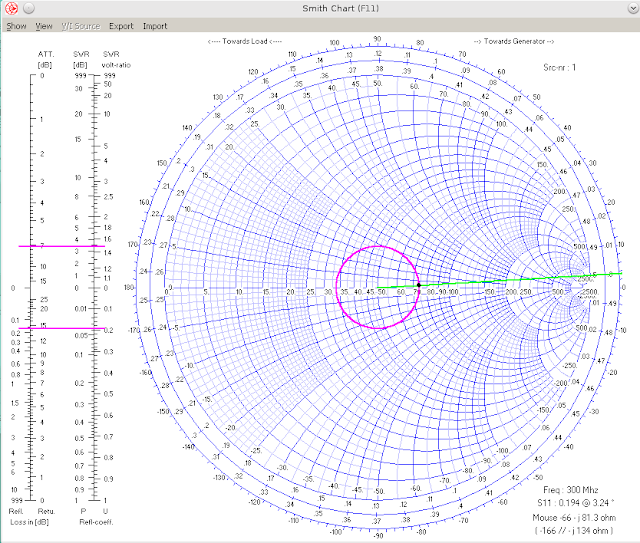

The Smith Chart is a polar plot of the complex reflection coefficient, Γ, for a normalized complex load impedance Zn = R + jX, where R is the resistance and X the reactance.
#Smith chart basics pdf how to
There is some algebra involved in understanding the basic transmission line equations, but - once you understand how to move on the graph - you can forget the math and just read the chart. What Is a Smith Chart?Īlthough there are many computer programs 2, 3 and network analyzers that can solve impedance matching problems for you, a complete understanding of the Smith Chart is highly beneficial in understanding the nature of transmission lines. This chart closely resembles the chart we see today. According to his biography, his impedance coordinates were not orthogonal - which means perpendicular - and there were no true circles, but the standing wave ratio was linear. The first graphical chart was limited by the range of data so he came up with a polar plot that was a scaled version of the first plot. He used a thermocouple bridge and voltmeter to make the measurements. Smith developed the first graphical solution in the form of a rectangular plot from his measurements of the maxima and minima voltages along the transmission line. Phillip Smith - Inventor of the Smith Chart. He relished the problem of matching the transmission line to the antenna a component he considered matched the line to space. Although Smith did a great deal of work with antennas, his expertise and passion focused on transmission lines. In 1928, he joined Bell Labs, where he became involved in the design of antennas for commercial AM broadcasting. Smith attended Tufts College and was an active amateur radio operator with the callsign 1ANB. The Smith Chart was invented by Phillip Smith, who was born in Lexington, MA on April 29, 1905. After reading this, you will have a better understanding of impedance matching and VSWR - common parameters in a radio station. The purpose of this article is to introduce you to the basics of the Smith Chart. The Smith Chart is one of the most useful tools in radio communications, but it is often misunderstood.


 0 kommentar(er)
0 kommentar(er)
